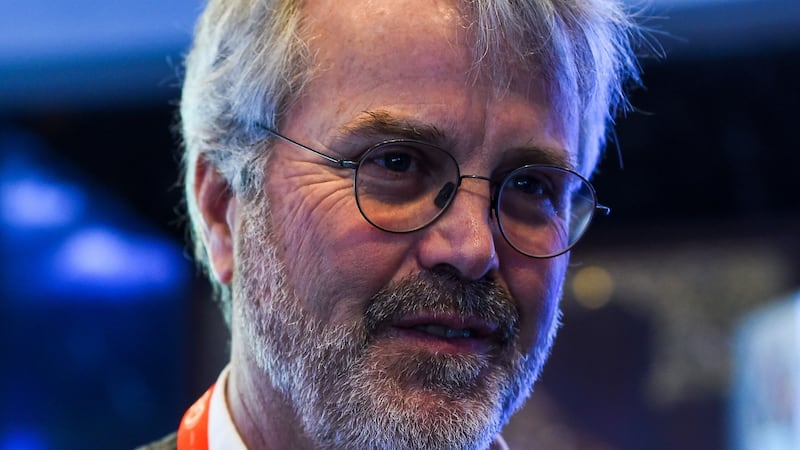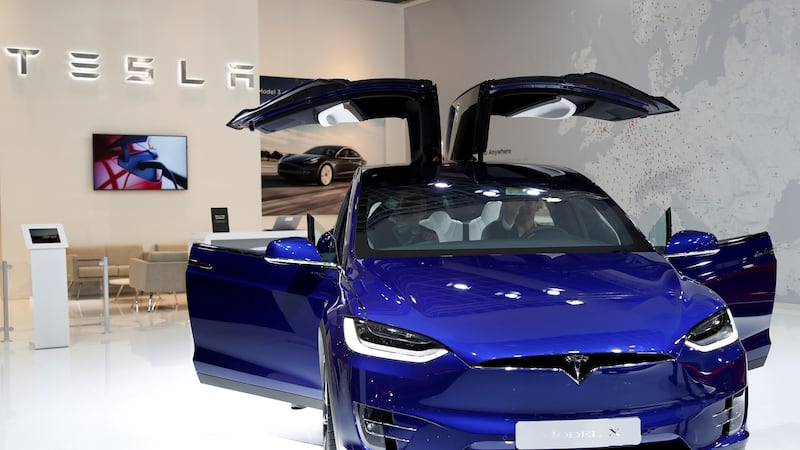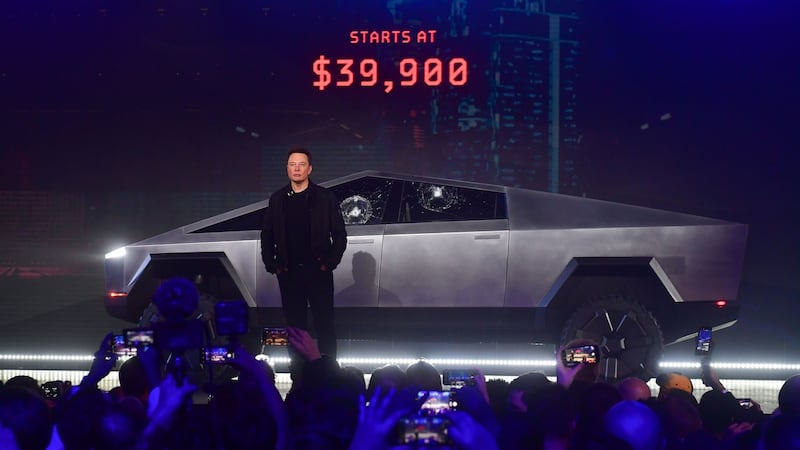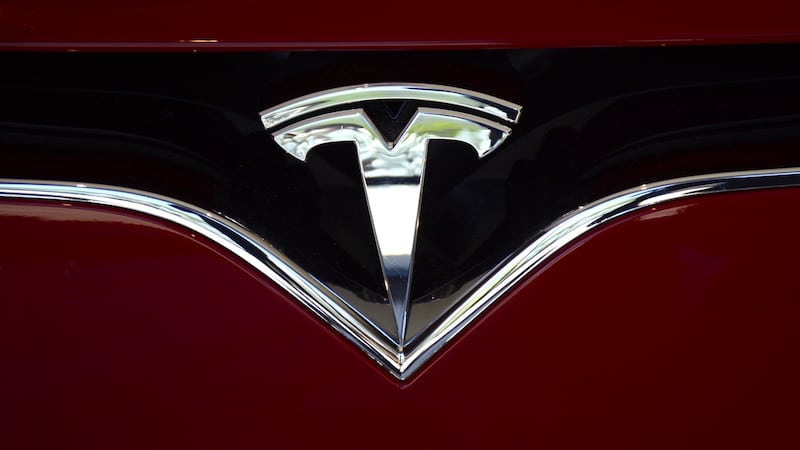Mention Tesla and people think Elon Musk. In the public narrative they are intrinsically linked. Tesla's story is one of how the combative chief executive – and real-life persona of Marvel Comics' Iron Man Tony Stark – took on the auto empire and won.
The truth is somewhat different, as told by Wall Street Journal reporter Tim Higgins, a story full of complexity, plot twists and multiple near-fatal flaws. "One of the things I really wanted to do with this book was get past the myth that Tesla's success was because of Elon Musk sleeping on the factory floor, that it was his personal will that created the company.
"There were lots of people who contributed to the company who made a lot of sacrifices. There would be no Tesla without Elon Musk, but the Tesla that we know was created in the early days by Martin Eberhard. "
Eberhard was a tech start-up success story, co-founder of the Rocket eBook, the precursor to the Amazon Kindle and its ilk that turned the book industry on its head. Now he was in the midst of a midlife crisis, wondering what to do next in life, divorcing his wife and in the market for the ultimate middle-aged cliche, a fast sports car.
Ever the engineer, Eberhard became convinced that electric was the way to go. The only problem was that he couldn’t find an electric car that suited his needs: fast and gorgeous.

It was Eberhard who created the car company in 2003 and named it after pioneering electrical inventor Nikola Tesla. It was he who mapped the strategy to start at the top end of the market, where price is not as critical for car buyers – an important point given that costly battery packs was the first of many hurdles to overcome. And it was he who turned to Elon Musk for funding to make the dream a reality.
Musk, fresh from cashing in on the sale of PayPal, was prepared to dream big and pay for it. But the final price for Eberhard was to be largely erased from the Tesla story. By 2007 he was shown the door of the company he had founded.
Eberhard’s tale is just one thread in a vast ream of plots, told in Higgins’s new book Power Play: Elon Musk, Tesla and the Bet of the Century. Its well-woven narrative takes us from one man’s midlife crisis to a car company whose latest quarterly profits surpassed $1 billion.
Speaking from his home in San Francisco, Higgins says he set out to write a very different book. “In 2018, I thought I was writing the story of this spectacular collapse of Tesla. It looked like after years of narrowly escaping demise, Elon Musk was finally going to get his comeuppance, and what actually took place was probably one of the most remarkable corporate turnaround stories in a generation. I don’t think a lot of people realise how close it was to the brink in 2018.”
Despite getting its all-important Model 3 on the road in 2016, Tesla’s finances were a disaster and it was burning through cash. By June 2018, when Higgins met Musk at Tesla’s factory outside Silicon Valley, he found the chief executive living at the plant, “trying to sort out an assembly line plagued by snags”.
Taunts
At the same time, Musk's Twitter account was loaded with taunts from short-sellers of Tesla stock. His email had messages from a recently fired employee accusing the chief executive of cutting corners. By August Musk and Tesla were facing charges from the US Securities and Exchange Commission. These were later settled, with Musk stepping down as chairman and paying a $40 million penalty.
Meanwhile, his late-night Twitter sessions and personal life were taking Tesla into the tabloids. During an interview with the New York Times, Musk proceeded to self-implode. He recounted all of the hardships he was facing at the time – nearly missing his brother’s wedding, spending his birthday on the factory floor, his use of Ambien medication to combat sleep troubles.
At Tesla, this unwanted media attention and Musk's erratic tweets had the board worried; shares plunged almost 9 per cent the day after the New York Times interview was published. The next month he appeared on the Joe Rogan Experience podcast, livestreamed on YouTube, seemingly smoking cannabis. Tesla stocks fell 5 per cent.

Yet remarkably, Tesla and Musk survived and he now leads the world’s most valuable automaker. “It’s an incredible drama and story,” says Higgins.
The auto industry has been blessed with gripping tales and madcap characters. Think Henry Ford, John Delorean, even more recently Carlos Ghosn, the former global boss of Renault-Nissan who is now an international fugitive, smuggled out of Japan in a music case while on bail.
In such dramatic company, Higgins regards Musk as an equally complicated character “who definitely enjoys the limelight and enjoys the narrative that celebrates what he has accomplished. And he’s accomplished a lot. No doubt about it. But the early days of the company are very complicated. It’s not an easy founding story. There’s not an easy narrative there.
“When we talk about Elon Musk, we focus so much on his engineering prowess, or his marketing and his marketing ability and his salesman aspect. But one of the things I think is underappreciated is his ability to find talented people and motivate them in ways that they probably didn’t even realise they could be motivated.
“One of the key successes at Tesla is that Musk is able to find people who he can tap into to put his vision on the road.”
Lessons
That vision at times has seemed incredibly naive. Tesla’s history is littered with lessons in how they got their financial numbers wildly wrong or failed to appreciate the complexity of bringing thousands of parts together from multiple suppliers to create a single product that then took months to assemble, deliver and sell, only then converting back into cash in order to pay the bills. In the auto industry, cashflow is the oxygen needed to survive and too often Tesla seemed about to choke.

And underestimating the complexity of car assembly has had major consequences in terms of quality. It’s an issue that continues today.
By targeting early adopters initially, Tesla earned some leeway on this front. “I remember talking to one guy, and he had multiple cars in his garage,” Higgins recalls. “He was talking about how his Model S had been in the shop for so long. But he was good-natured about it, because it was a cool car. I mean, luxury car owners – like supercar owners – are accustomed to problems. And it’s not their daily drive, they’ve got many cars.
“But when you start to get in the mainstream, if a guy needs his car to go to work and he only owns one car, if it’s in the shop, or it’s breaking down all the time, that becomes a problem. And so that’s the risk that Tesla has. They’ve got this great brand, and people are often willing, at this point, to overlook some of these issues, customer service issues. The question will be, how long does that last for Tesla?
“Can they speed up and improve on that in a quick enough manner? Previous customers gave them the benefit of the doubt. As you get more and more people into the Tesla ecosystem, they’re less patient. So that’s one of the challenges.”
No compromise
All these problems have caused Musk to lose his cool many times along the way, but he’s not one to compromise. “Musk can regularly seem naive, even delusional,” says Higgins. “But he’s also very smart, very hard-headed, and he had the capital resources and the risk tolerance to put his vision in place.
“If you look at the chief executives of any of the major auto-makers in the US, they didn’t get to the C-suite by taking the kind of risks Elon did. They are oftentimes much more studied and risk averse, climbing the corporate ladder. Whereas Elon takes chances that could lead to demise. But if they work out, they change the world. And that’s one of the big differences between Tesla and others.”
Musk may be part of the Silicon Valley billionaire tech scene, but Higgins says he's different from the Google guys or Facebook giants.
“There’s a generation of people who came up in Silicon Valley, who have made their fortunes from essentially selling ads, you know, trying to figure out a better way to sell ads. And that’s not the kind of thing that interests Elon.”
If there is a common thread that runs through all Musk’s companies, it’s that they are often about tackling existential issues facing humankind. Tesla works to combat climate change; SpaceX to create the potential to live on another planet if the need arises, and Neuralink to cope with the advent of artificial intelligence and the threat of singularity (when machine intelligence surpasses human intelligence and accelerates at an incomprehensible rate).
“He’s the world’s biggest prepper,” says Higgins. “He is going to save the US, he is going to save the world or he’s going to go to Mars as a back-up. You know, the thing is, Elon is able to generate a lot of interest, especially among this younger generation, as he’s tackling real-world things.
“Sometimes these ideas seem crazy when he first says them, but he finds some of the smartest people he can who want to dream big too and who want to try the impossible, and he unleashes them.”
Burned out
Yet the story of Tesla is littered with high-fliers who burned out after working closely with Musk. “The advice that I’ve heard is to survive at Tesla you don’t want to fly too close to the sun. Elon being the sun, right. I’ve talked to a lot of people who work closely with him and talk about how he inspires them. He’s funny, he’s charming, but he can be a real hard person to work for, and he wants the impossible. And sometimes if you don’t deliver the impossible, he’s going to go on to the next person. You’re an interchangeable tool he has in his kit, and that can be hard, understandably, for people who have sacrificed a lot for him. But in his mind it’s clear, he’s thinking about this other bigger thing.”
With Tesla now a heavyweight in the age of electric cars, two challenges are on the horizon. Can it see off new rivals and the inevitable resurgence of established brands? And can Tesla live without Musk?

On the first, Higgins sees major hurdles ahead. “The interesting thing about the auto industry is that it’s brutally competitive. It’s a knife fight every day, every quarter, every year that has seen giants brought to their knees on more than one occasion.
“And it requires constant attention to development and bringing out new product. Tesla is going to face challenges from competitors, you know, especially ones who are going to try to copy and push it a little further than what they’ve had.
“And one of the things that Tesla has not shown that it can do is develop multiple products at the same time. They’ve also always struggled with new products.”
Higgins says it’s hard to imagine Tesla today without Musk at the wheel. “The question for Tesla for the next generation is, can he groom leadership to take over once he pulls away?”
It’s an increasingly important question. Last month during a court case over Tesla’s acquisition of SolarCity, Musk testified that he has tried “very hard not to be the chief executive of Tesla, but I have to or frankly Tesla is going to die”.
Whatever about the future, for now Musk and Tesla have won the day. “You look at Mercedes, last month saying it was going all electric, you look at GM and Volkswagen racing to invest in electric vehicles.
“Elon Musk has sold the world on the vision of electric cars. And there are a lot of ways that that’s becoming the case. His idea for what the future of cars will look like is being pursued by the biggest of companies now.”
Power Play: Elon Musk, Tesla and the Bet of the Century by Tim Higgins is published by WH Allen.



















